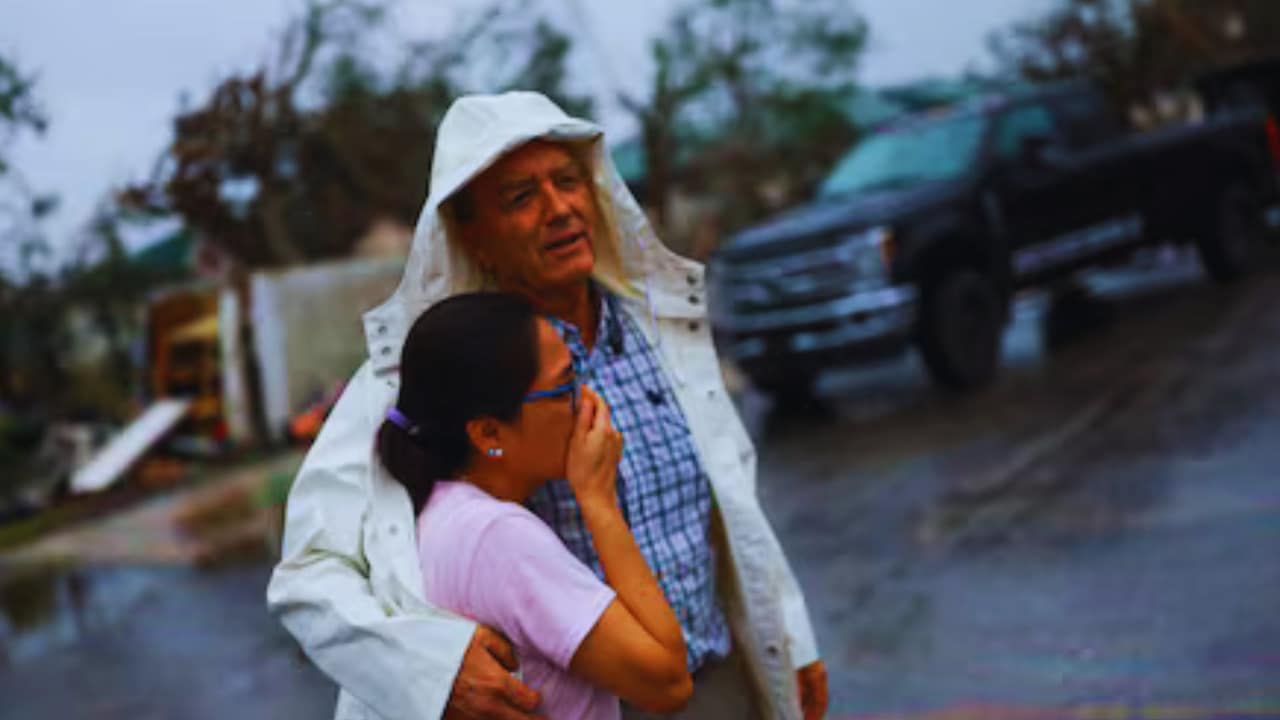Double Trouble: Florida Reels from Back-to-Back Hurricane Hits
As a seasoned reporter covering natural disasters, I’ve seen my share of destruction. But the scene unfolding in Florida right now is truly unprecedented. The Sunshine State is grappling with the aftermath of not one but two major hurricanes that slammed into its shores within just two weeks.
Hurricane Milton, a monster storm that rapidly grew from a Category 1 to a Category 5 in less than a day, struck Florida’s west coast on Wednesday. It left a trail of devastation in its wake, with at least 16 people dead and millions without power. This comes hot on the heels of Hurricane Helene, which battered the Gulf Coast late last month.
The one-two punch of these storms has left Floridians reeling. As I toured the affected areas, the scale of destruction was staggering. Entire neighborhoods lay submerged in murky floodwaters.
Trees were snapped like twigs, their branches strewn across streets and lawns. The constant hum of generators filled the air as residents tried to salvage what they could from their waterlogged homes.
In St. Lucie County, on Florida’s eastern shore, a series of tornadoes spawned by Milton wreaked havoc. The twisters tore through a senior living community, claiming at least two lives. The sight of overturned mobile homes and scattered personal belongings was heart-wrenching.
At a press briefing, Governor Ron DeSantis highlighted the massive cleanup effort already underway. “In just 72 hours, we’ve removed 2,200 truckloads of debris from the Pinellas County barrier islands,” he stated. “That’s over 40,000 cubic yards of material. I don’t think there’s ever been that much debris removed in such a short time.”
The governor’s words underscore the monumental task facing Florida. With more than 6,500 National Guard members activated across 23 counties, the state is mobilizing all available resources. These troops are engaged in everything from search and rescue operations to clearing roads and distributing aid.
But the challenges are immense. As of Friday morning, over 2.27 million homes and businesses were still powerless. Some residents, who had just gotten their electricity back after Helene, plunged into darkness again.
The human toll of these disasters is impossible to ignore. In Tampa, I spoke with Melissa Wolcott-Martino, an 81-year-old retiree. “We were expecting a 10-foot surge that would’ve been over our roof,” she told me, relief evident in her voice. “It’s an absolute miracle we were spared.” But countless others of loss and devastation exist for every story of a narrow escape.
Climate scientists point to Milton’s rapid intensification as another warning sign of our changing planet. The storm’s explosive growth, fueled by warm ocean waters, is part of a worrying trend making hurricanes more powerful and unpredictable.
The financial impact of Milton alone is staggering. Early estimates from analysts suggest the storm could cost insurers between $30 billion and $60 billion. This comes as many Floridians are still grappling with insurance claims from Helene.
President Joe Biden is set to visit Florida on Sunday to survey the damage firsthand. His administration calls on Congress to approve additional emergency funding for the Federal Emergency Management Agency (FEMA).
With lawmakers currently in recess, there’s growing pressure for them to return to Washington and address this urgent need.
As Florida begins its long road to recovery, the resilience of its people shines through. In St. Petersburg, neighbors banded together to clear debris and check on older people. Local businesses, many still without power, found ways to serve hot meals to those in need.
The coming weeks and months will be crucial for Florida’s recovery. The state faces the immediate challenges of cleanup and rebuilding and long-term questions about coastal development and climate resilience. As the frequency and intensity of these storms increase, it’s clear that business as usual is no longer an option.
For now, though, the focus remains on the immediate needs of those affected. Aid organizations are mobilizing, and volunteers from across the country are pouring in to lend a hand. It’s a reminder that even in the darkest times, the human spirit has an incredible capacity for compassion and resilience.
As Florida picks up the pieces from this double disaster, one thing is sure: the road ahead will be long and challenging. But if the determination I’ve witnessed in the past few days is any indication, the Sunshine State will emerge from this crisis more vital than ever.
